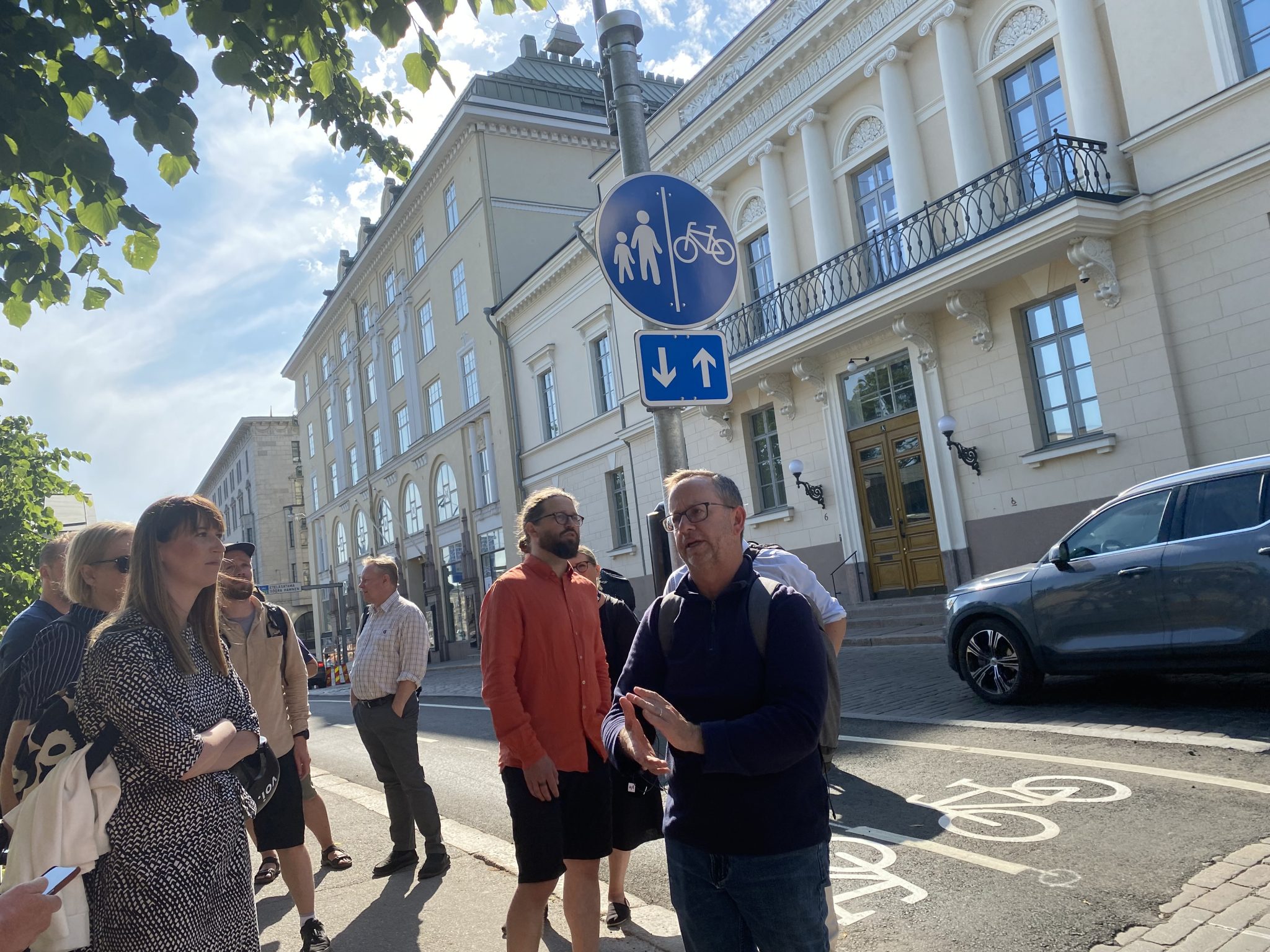Safer traffic through innovations
Electric scooters are a popular means of transport in Helsinki, but their safety has sparked debate. Can new technologies be used to improve riding behaviour and detect needs for developing the infrastructure? The results of our three-month test period are promising.

The experiment implemented by the Mobility Lab Helsinki project examined whether technology based on artificial intelligence and a machine vision solution can encourage safe e-scooting. The aim was also to identify items for development in the city’s infrastructure from the point of view of traffic safety. The experiment was carried out in cooperation with Drover AI, Voi Technology, Vianova and VTT.
Drover’s PathPilot solution was installed on 25 Voi e-scooters. In the first phase of the experiment, the technology was used to collect data on the urban environment. In the second phase, acoustic signals were activated in the e-scooters that provided feedback on the rider’s behaviour. For example, riding on the pavement caused an unpleasant warning sound. Its purpose was to motivate the user to move back to the roadway where riding was allowed.

Testing and development through cooperation
The joint Mobility Lab Helsinki project of Business Helsinki and Forum Virium Helsinki offers companies possibilities to try out innovations related to smart mobility in a genuine urban environment. The Voi e-scooters equipped with the new technology were introduced at a demonstration event held in June 2023 at Esplanadi. Those interested in the experiment had the chance to try out e-scooters equipped with the new technology.
– I welcome all projects related to and contributing to traffic safety. It is great that such testing activities are organized. It is not a problem if they do not always succeed, and there is always the possibility to learn new things, says Superintendent Dennis Pasterstein, who was present at the event and is responsible for traffic control in Helsinki.
Senior Specialist Juuso Suomento from the Ministry of Transport and Communications was also present to familiarise himself with the innovation:
– It is great that the city offers such activities. This will hopefully improve traffic safety. Scooters are, after all, a fine means of transport. It is important to study how they can be adapted into a safe part of other traffic.
Scott Shepard from Drover AI emphasizes the importance of testing such a plug-and-play solution in an authentic environment:
– PathPilot can be effectively tested in the actual environment of use in a dense urban environment. Helsinki provided a great testing platform. The environments used by pedestrians and cyclists are diverse and the city can benefit from AI-based sensors. In the test platform operations, everyone wins: the city, the company and research.


Continuation after success
The three-month testing period suggests that riding on pavements can be reduced with the help of artificial intelligence – by up to 15%, according to the results. The technology was also able to detect other traffic safety hazards, such as potholes that hinder traffic and improperly parked cars. The experiment also identified the impact of infrastructure on the use of e-scooters: well-functioning solutions, such as clearly marked cycle paths, motivate people to follow traffic rules. The interesting research results encourage further research on the topic. The experiment also produced material for VTT’s and Forum Virium Helsinki’s larger research and development projects that deal with the topic, which were involved in cooperation in the experiment.

